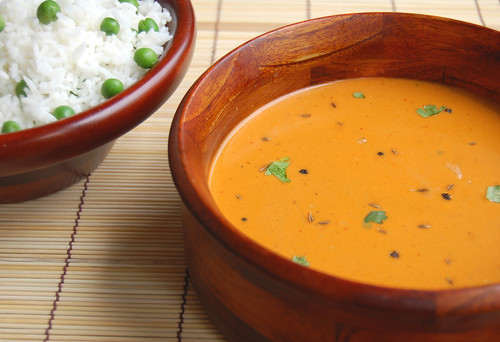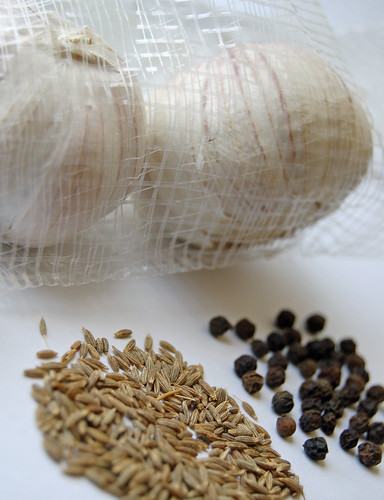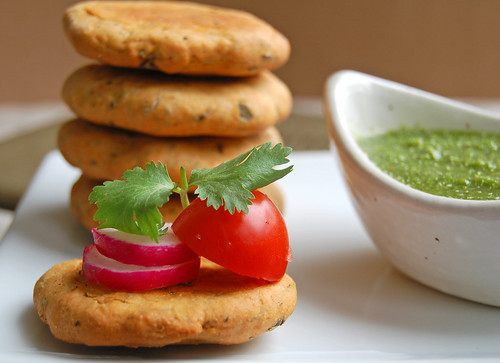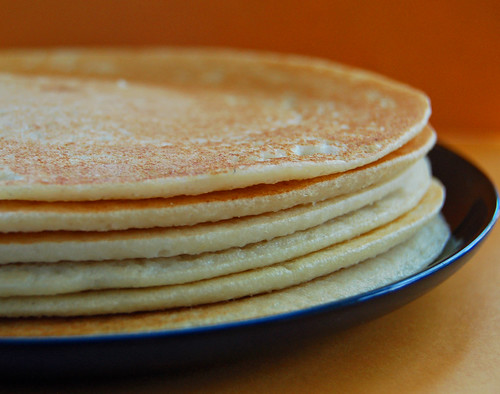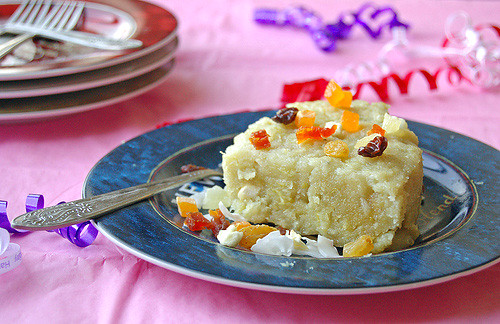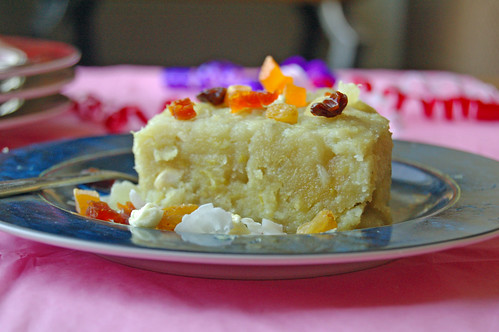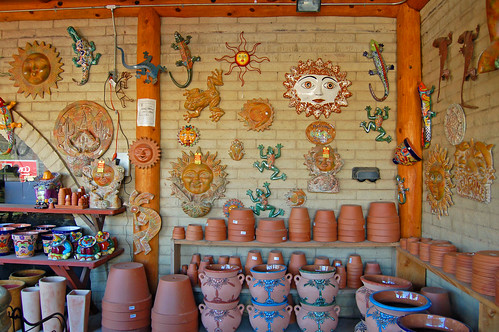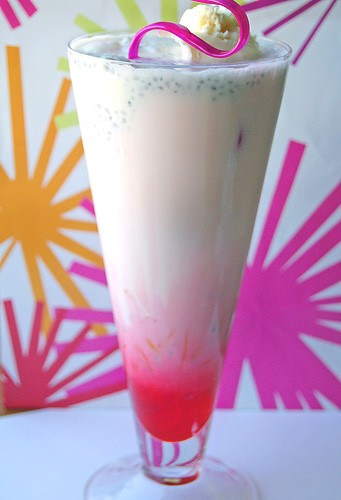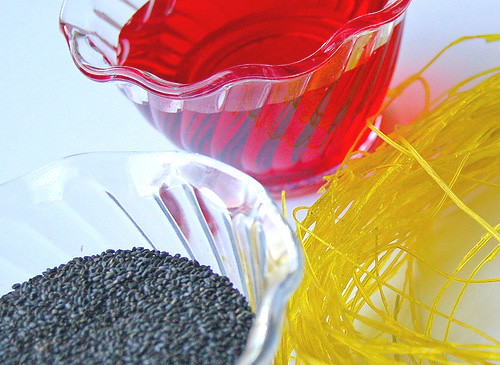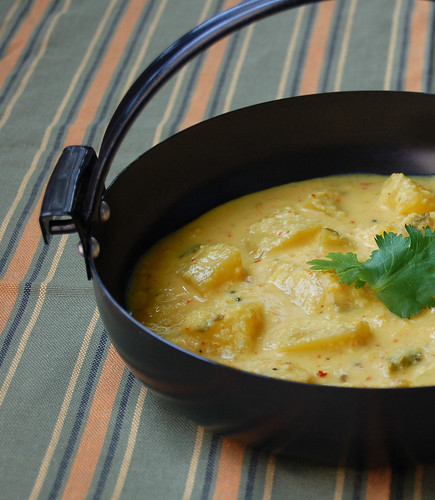Fast food - Jeer-meerya Kadhi
Jeer-meerya kadhi is one of the easiest curries in the Konkani repertoire. It is made with cumin (jeera) and peppercorns (meeri). In keeping with our predilection to truncate words and make dishes sound like melodious songs, the curry is called 'jeer-meerya' kadhi. Tres francais if you ask me!
What elevates it from a humdrum curry to a super flavorful one is the tempering of crushed garlic cloves. These semi soft, semi crunchy cloves are so delectable that believe you me, fights can break out at the dinner table over who gets more!
Serve the curry with steaming hot rice, roasted papads and your favorite pickle and you have a satisfying meal at the end of a hard day. In less than the time it would take you to watch Rachel Ray's show :-)
(serves 2)
3/4 cup coconut, grated
1 tsp cumin
7-8 peppercorns
1-2 dry red chillies (Kashmiri or Bedgi chillies will give you the right color)
7-8 garlic cloves, peeled
1/4 tsp tamarind paste
salt to taste
2 tsp oil
Heat half a teaspoon of oil in a pan. Fry the cumin, peppercorns and chillies until well toasted and aromatic. Let cool, then grind with coconut, tamarind and 2 cloves of garlic into a fine paste (adding about half a cup of water gradually).
Transfer to a sauce pan, add a cup of water (or more/ less to get desired consistency) and simmer over moderate heat. Season to taste.
Smash 4-5 cloves of garlic lightly with the back of your knife. In a separate pan (tadka ladle) combine remaining oil and garlic cloves and place on heat (this will infuse the oil as well). Saute until they turn reddish brown. Pour the tempering over curry and serve hot.

